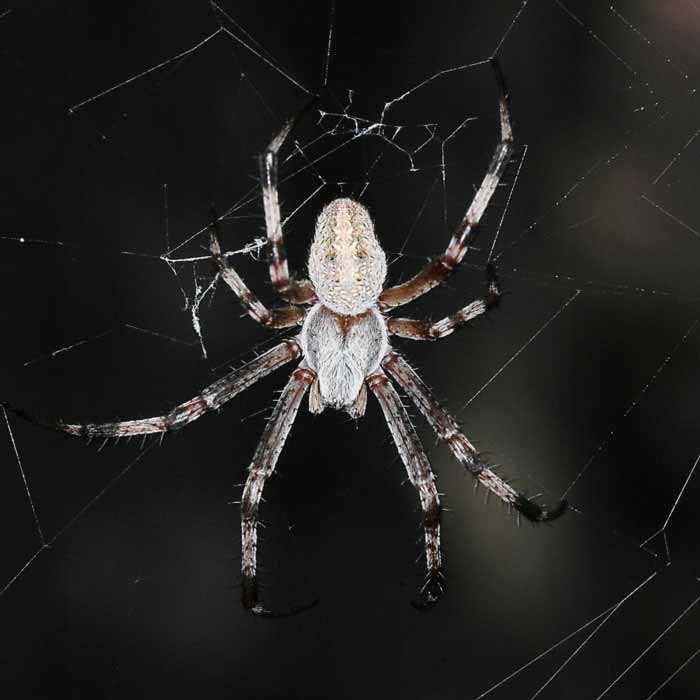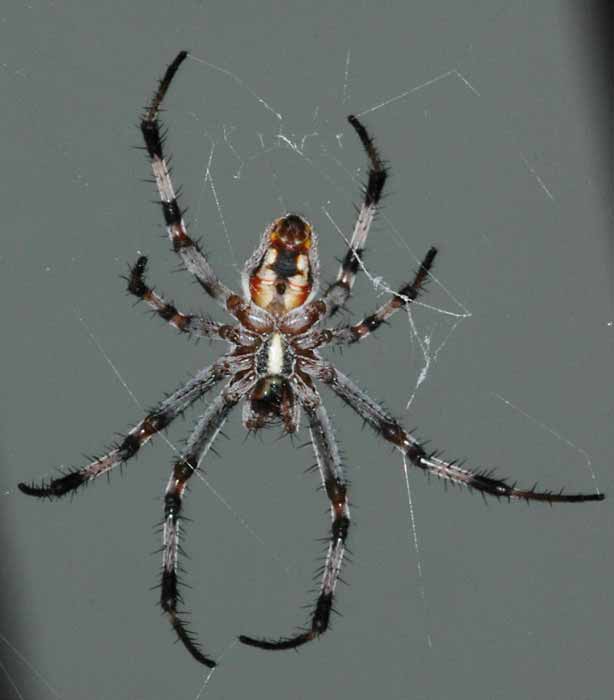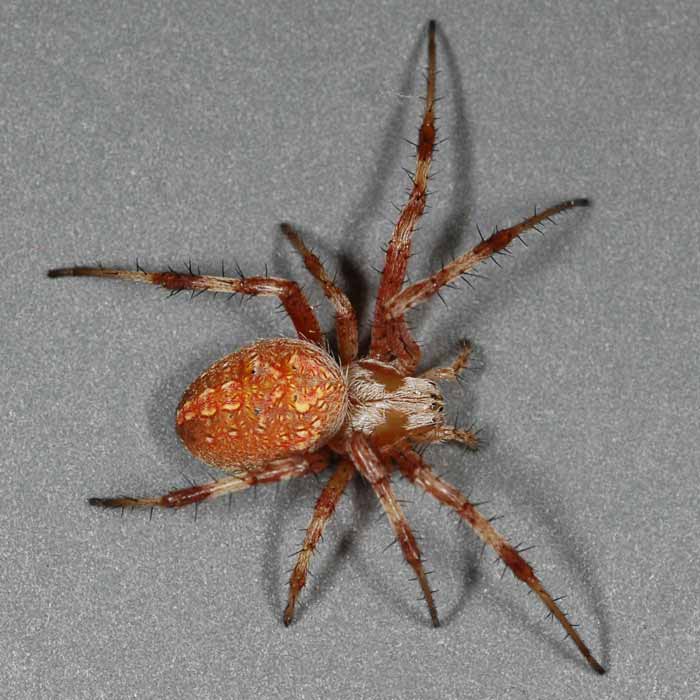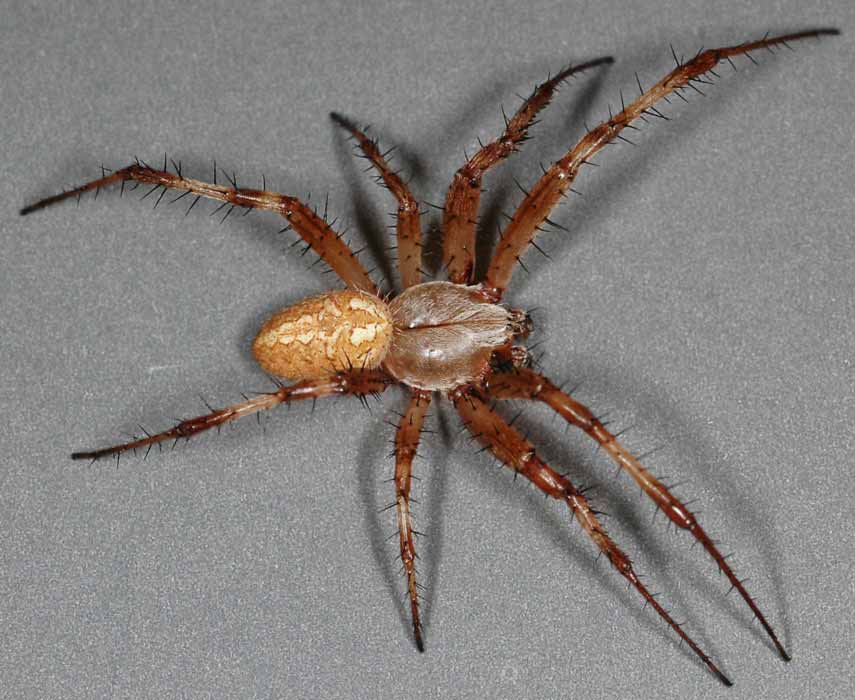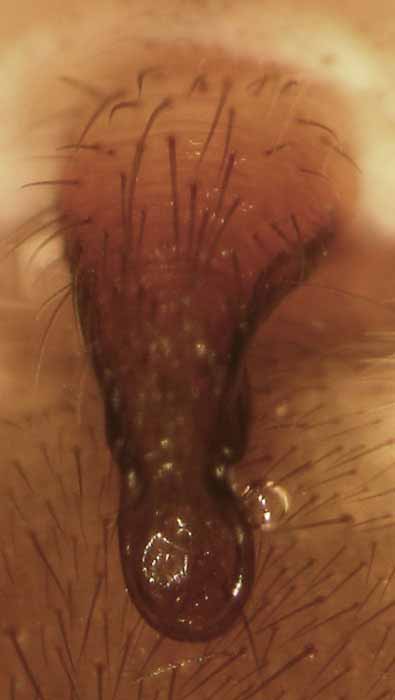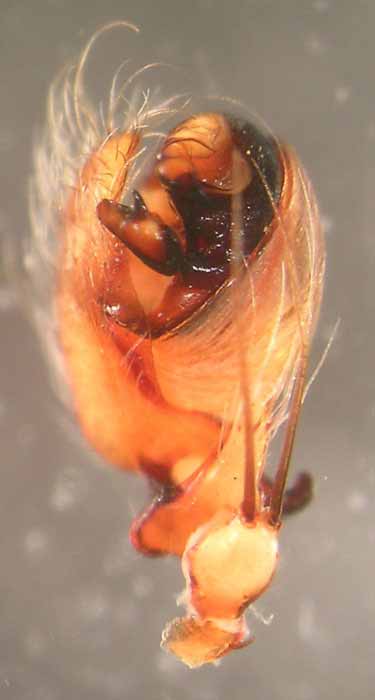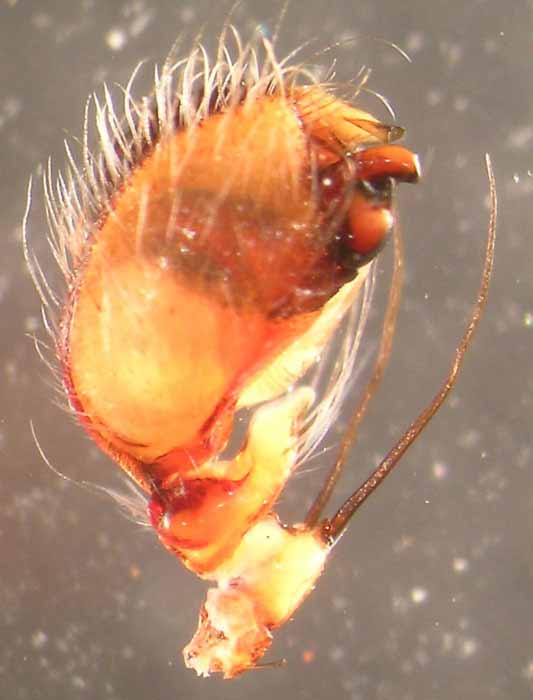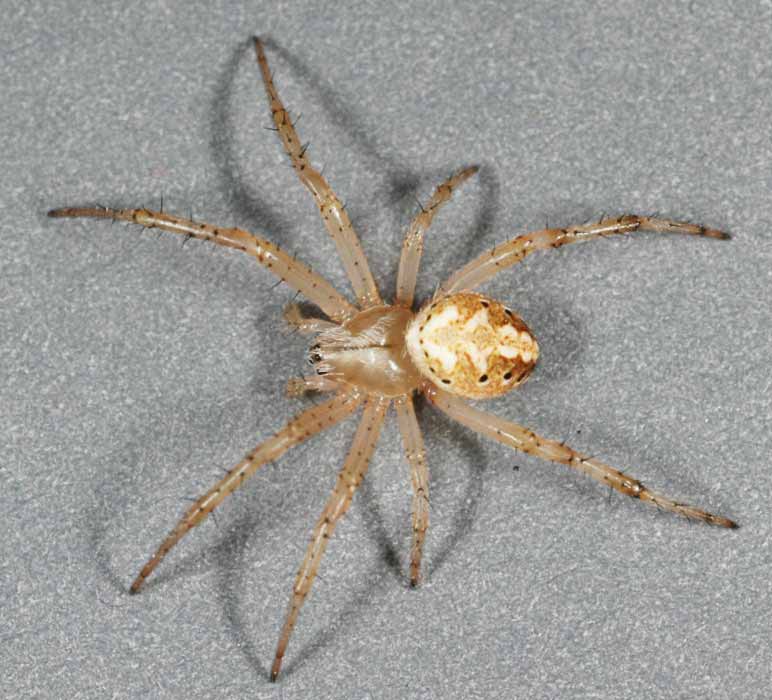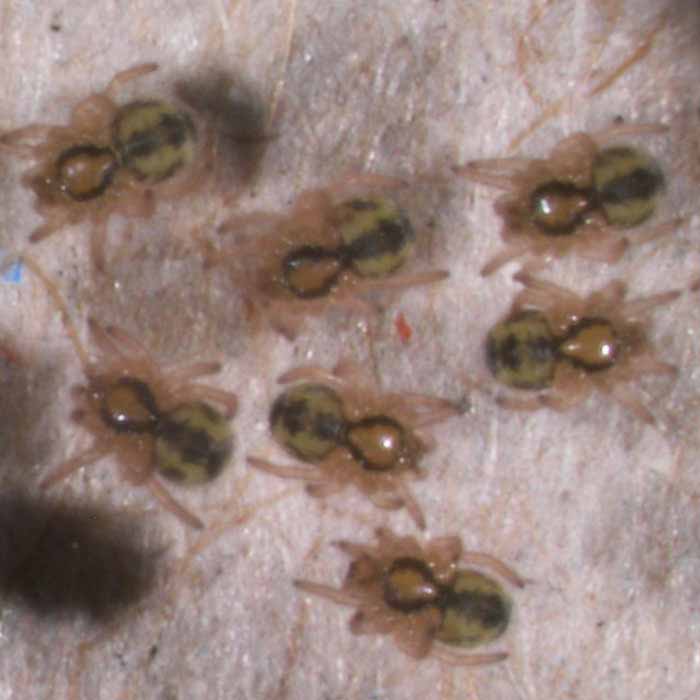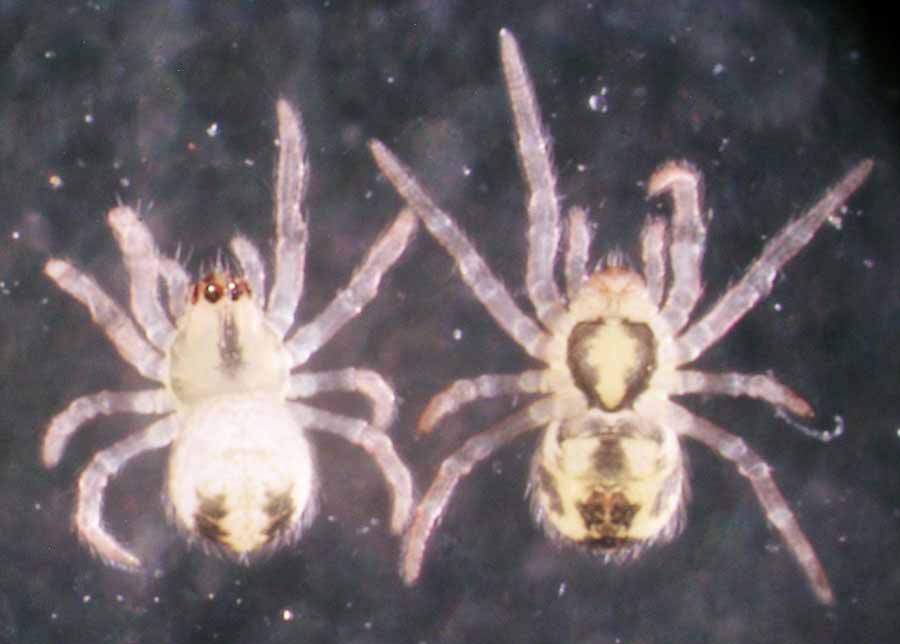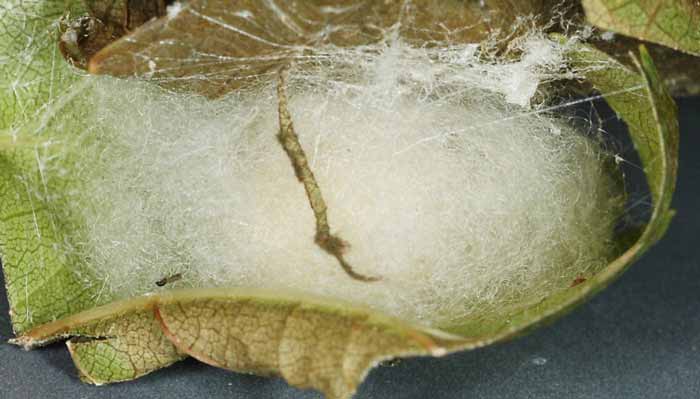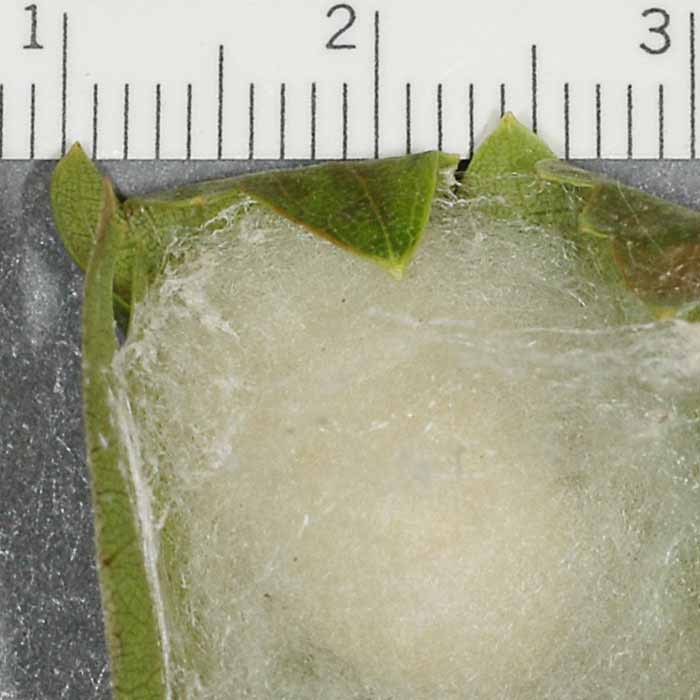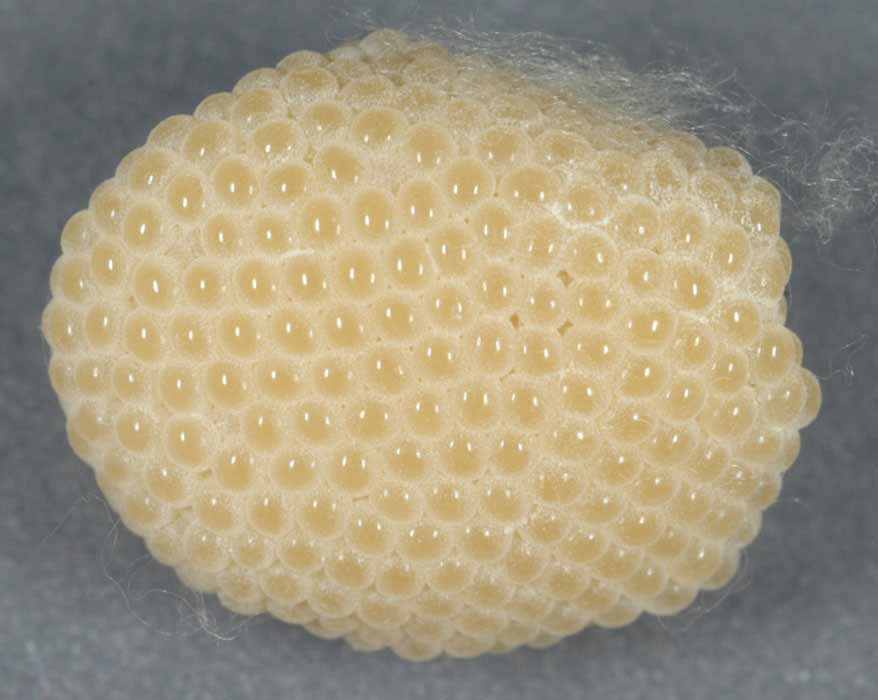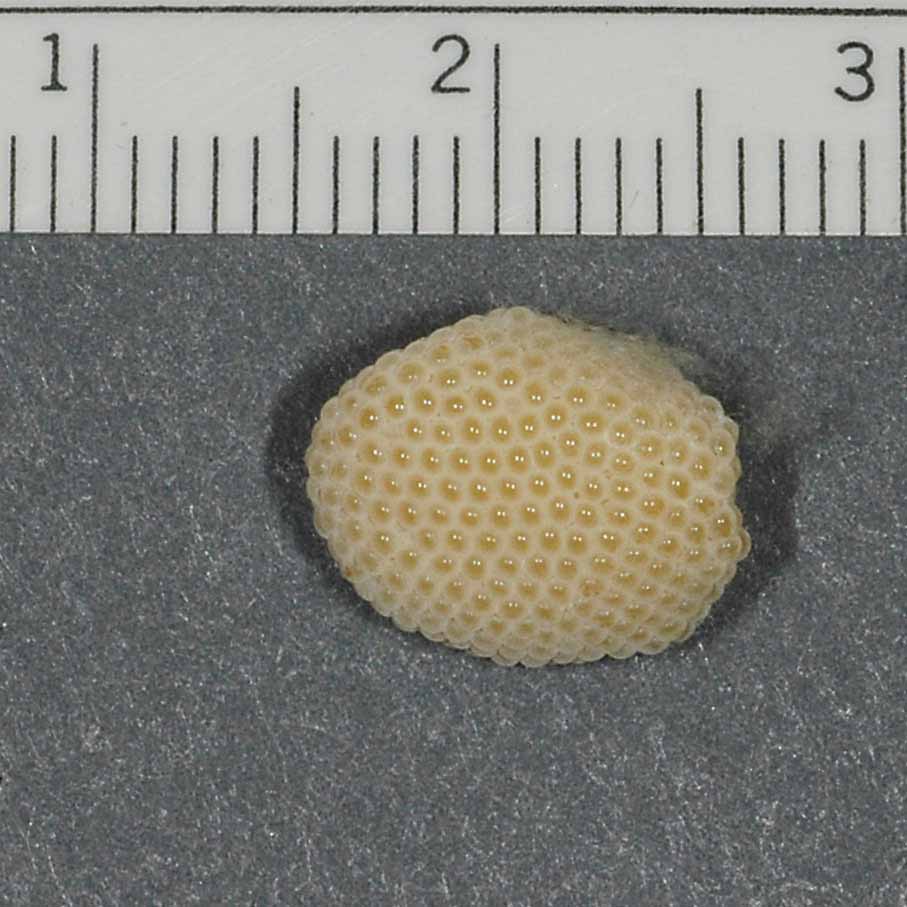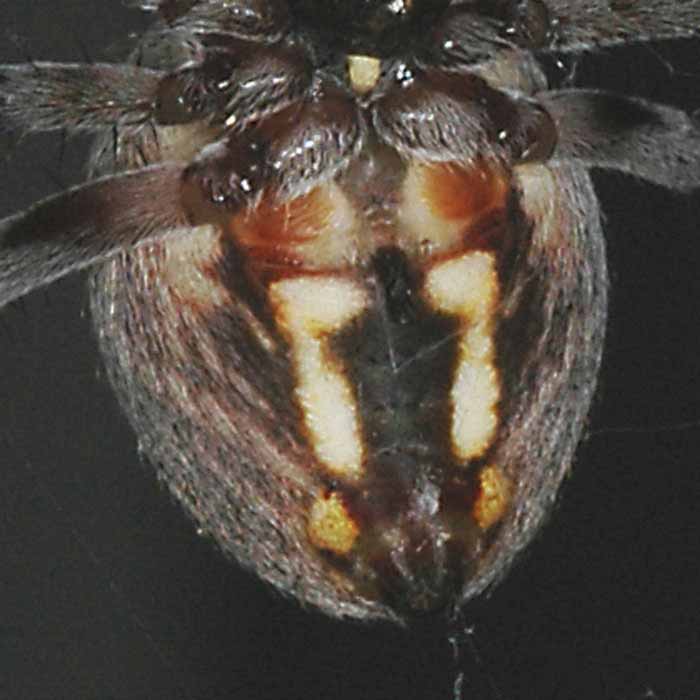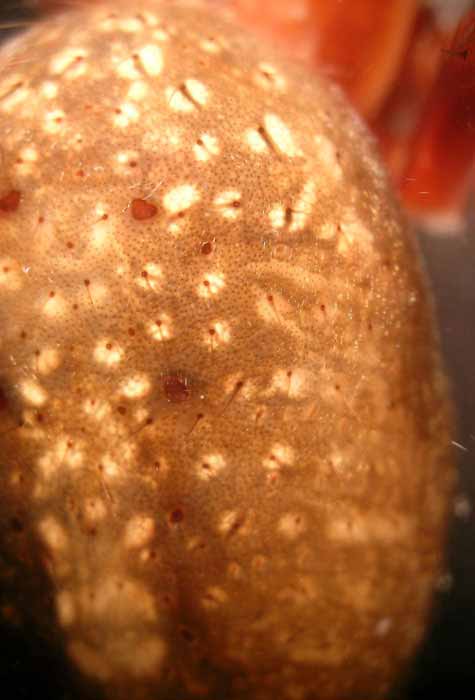Neoscona oaxacensis
|
adult female, live; dorsal view |
|
adult female, live; ventral view |
|
adult female, live; orange coloration |
|
adult male, live |
|
female genitalia; epigynum |
|
male genitalia; palp, lateral view |
|
male genitalia; palp, ventral view |
|
grape size comparison with adult spiders; male (left), female (right) |
|
spiderling, live |
|
spiderlings, live |
|
spiderlings, dead; dorsal (left), ventral (right) |
|
egg sac |
|
egg sac with scale (cm) |
|
egg mass |
|
egg mass with scale (cm) |
|
diagnostic feature; ventral abdominal markings |
|
diagnostic feature; dorsal coffee bean markings |
Current valid name
Neoscona oaxacensis (Keyserling) (family Araneidae)
Recognition and diagnostic features
Large bulbous abdomen, many spines on its legs. Lateral eyes very far from median eyes. Much variation in coloration, ventral surface of abdomen with central black square bordered laterally by 4 white dots or 2 comma-shaped marks, often has coffee bean pattern on dorsum of abdomen.
Related or similar species
Metepeira arizonica
Spider
Body lengths when mature: male: 6.3 - 12.7 mm, female: 8.9 - 18.0 mm
Although immatures should resemble mature adults, there is tremendous variation in coloration that can cause uncertainty.
Egg sac
Description: Loosely made egg sac in a cavity of a folded leaf, massive number of eggs neatly arranged in a tight pattern, eggs not loose like in other sacs, 14.4 ± 3.1 mm wide, 20.6 ± 1.0 mm long
Number of eggs per sac: 898 ± 141.6
Size of egg: 0.81 ± 0.051 mm
Time of year eggs are likely to be laid: July for first generation, September to October for second generation after the harvest season is mostly over
Distribution
In California: throughout much of the state
Elsewhere: southwestern U.S. states through Central America into Peru
Native to North America
This species has not been transported or become established outside of its range.
Biology
Nocturnal orb weaving spider, often stringing a large orb web between rows such that field workers put sticks on their tractors to intercept the webs and knock the spiders down. Hides in grape bunches. May have two generations in the Central Valley, which is atypical for the species (usually one generation per year). Generally completes life cycle in about 6 months then dies by winter. Can be very large.
Status in table grapes
Level of Incidence: common
Level of Concern in New Zealand: WPNZ (May 2010) nr, BORIC (Dec 2011) R, MAF-BPRA (2002) nr (coding definition)
Level of Concern in Australia: WPAU (2006) nr (coding definition)
Level of Medical importance: minor, however, because it is a large spider, a bite would be painful due to mechanical fang penetration of skin
Common name
Western garden orbweaver for species, orb weavers for family
Taxonomic history
Fairly stable, especially considering the amazing coloration variations this spider can exhibit.
Selected references
Berman, J. D., and H. W. Levi. 1971. The orb weaver genus Neoscona in North America (Araneae: Araneidae). Bull. Mus. Comp. Zool. 141: 465-500.
Pascoe, F. H. 1980. A study of Neoscona oaxacensis (Araneae: Araneidae) in commercial avocado orchards in San Diego County, California. Calif. Avocado Soc 1980 Yearbook 64: 153-186.

